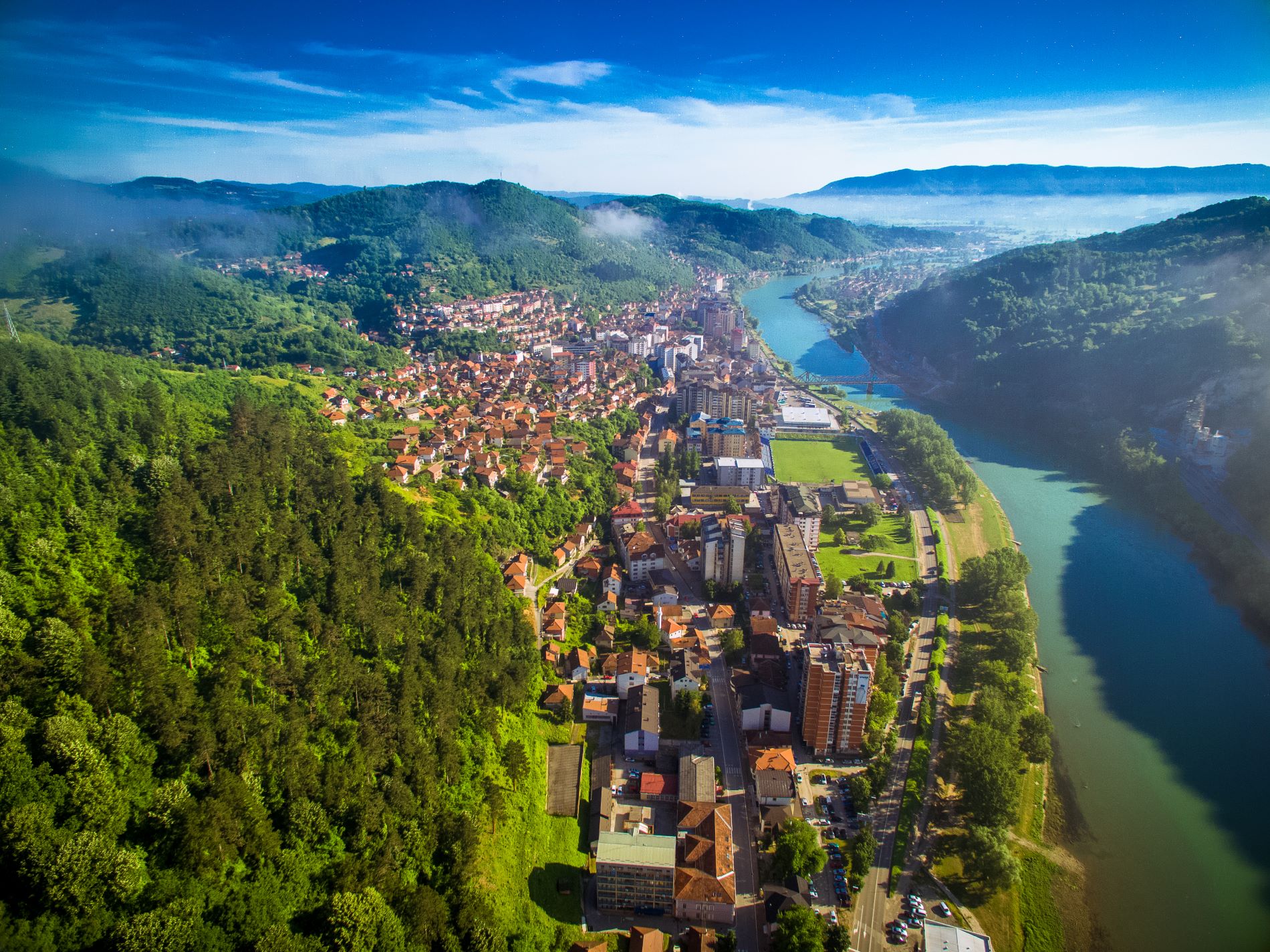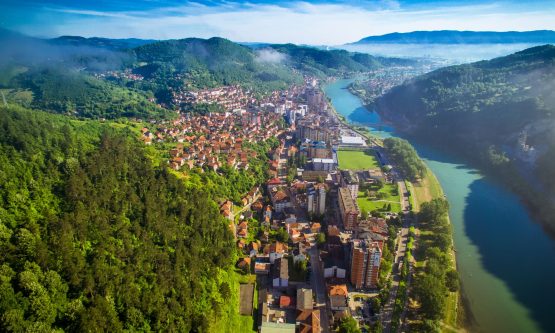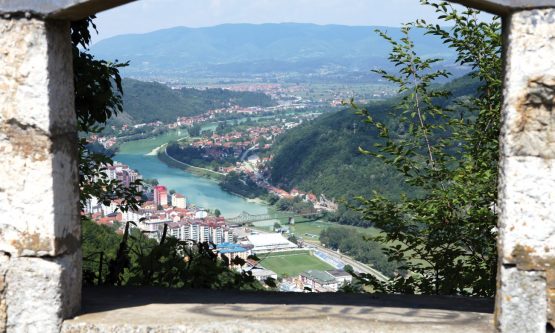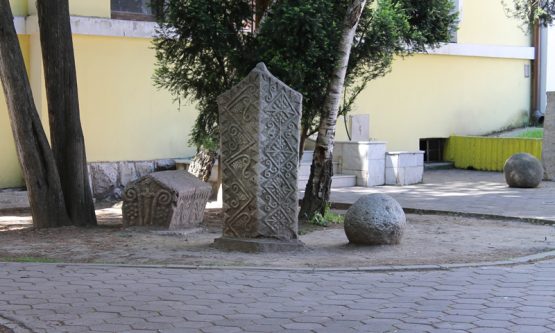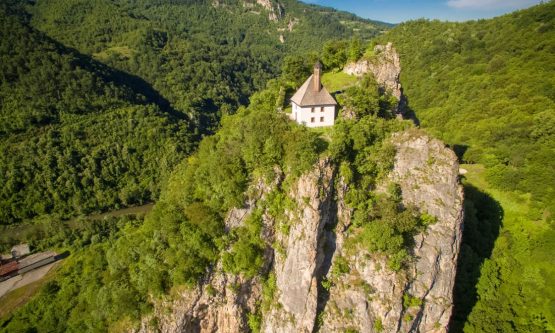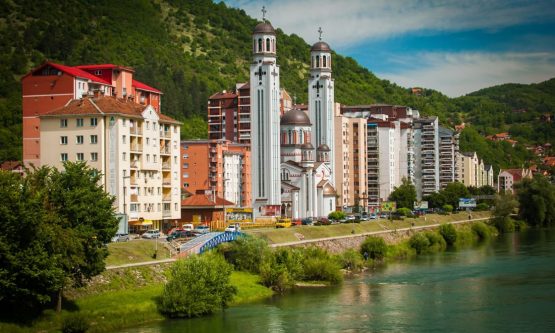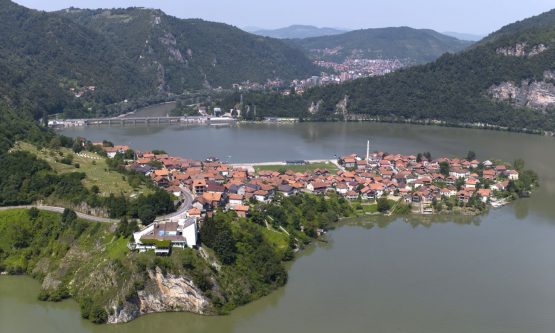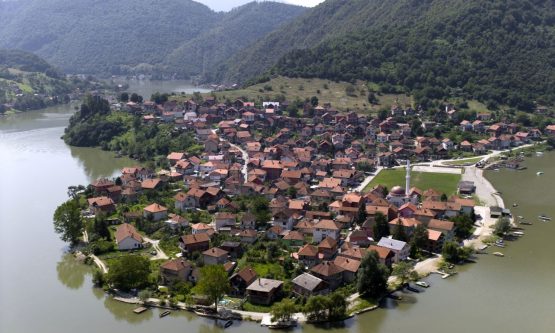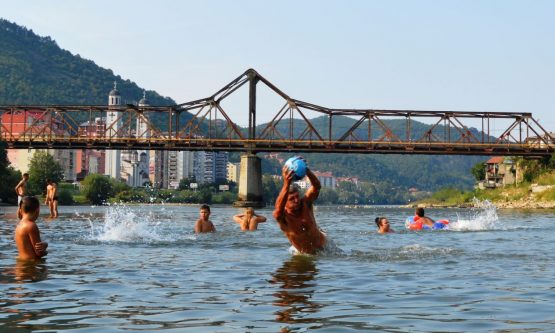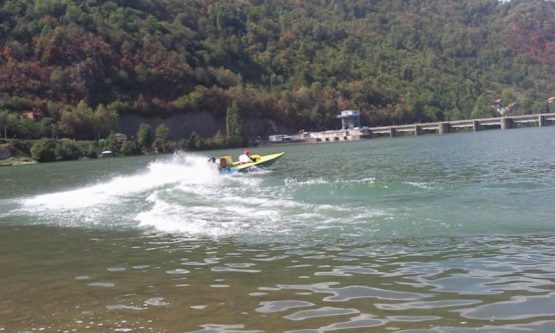Welcome to Zvornik
Zvornik is a city with a turbulent past and one of the oldest in this area. It was and remained a crossroads. It was first mentioned in history in 1410, under the name Zvonik. It is located on the very border with Serbia, with which it is divided by the Drina River, and connected by an old iron bridge built in 1929 at the initiative of King Alexander Karadjordjevic. On the other side of the Drina in Serbia is its much younger namesake Mali Zvornik. A large number of archaeological sites and findings testify to the long-term habitation of this area, with Roman sites, stećak necropolises, medieval fortresses, churches, monasteries, etc. standing out in particular.
The most beautiful view of Zvornik and the Drina River is from the fortress located on an elevation above the city of Zvornik. The Đurđev grad fortress dates from the end of the 13th or the beginning of the 14th century.
Culture

A special feature of Zvornik is its unique fortification – the Lower, Middle and Upper Town, the largest and most distinctive fortification in Bosnia and Herzegovina. The Zvornik Fortress – Đurđev grad, as one of the most valuable objects of its kind in the country, has been declared a National Monument of Bosnia and Herzegovina. It is assumed that the fortress was built at the end of the 13th or the beginning of the 14th century. The fortress was occupied in the 15th century by Despot Đurađ Branković, after whom it bears the name. According to legend, the fortress was built by his wife, the Accursed Jerina, from where it also bears the name Jerinin grad, the fortress was later expanded by the Turks, and upgraded by the Austro-Hungarians, so that today the fortress represents a testimony of different historical periods. The city gate is one of the recognizable symbols of the city and one of the parts of the Lower Town. In the immediate vicinity of the fortress is the Church of St. Petka Trnova, which was built on the model of Njegoš’s chapel from Lovćen. The Casina building is an architecturally valuable building from the Austro-Hungarian period, built at the beginning of the 20th century for the needs of the Austrian army.
The Casina building dates from 1910 and was once used as an officer’s house. The building was built in the Art Nouveau style and was once a gathering place for young people and a place for cultural events. Today, this building with a yellow facade is a recognizable symbol of the city and houses important cultural institutions – the Library and the Museum Collection.
Nature
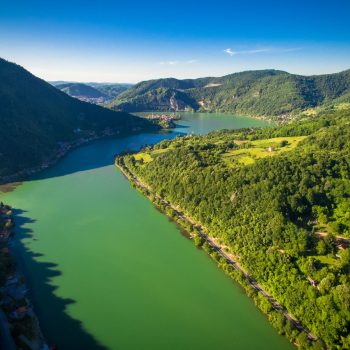
Zvornik is located on one of our most beautiful rivers, the Drina, which, as it flows by the city, takes on a specific blue-green color, which is why it was even called Zelenika (Greenish) in the past. Zvornik is also characterized by Burinke or Zvornikuše, i.e. Zvornik boats that transported people and goods. The Drina River, with its cold, clear, transparent and greenish water, is suitable for recreation and various water sports, rafting, boating or sport fishing. This river is extremely rich in fish (trout, catfish, pike, huchen, barbel…) and provides a real treat for all fishermen. Besides the Drina, there is a promenade, a well-maintained city beach and courts for beach volleyball and beach soccer. In Zvornik, there is a Kayak Canoe Rafting Club “Drina” Zvornik – Divič, through which you can organize kayak and canoe tours on Lake Zvornik.
Lake Zvornik stretches 25 km upstream from the 45 high dam near Zvornik and Mali Zvornik. Lake Zvornik lies at an altitude of 140 m. On the shore of Lake Zvornik there are small beaches, a large number of weekend houses and several catering facilities, and kayaking, canoeing and folk boat rides along with fishing, swimming and recreation are just some of the activities that tourists can engage in on this lake. The National Championship in Kayak and Canoe on calm waters is held on the lake.
Only 24 km from Zvornik is Vitinički Kiseljak, where, along the course of the small river Jasenica, nine springs of mineral water gush out, different in quality, capacity, healing properties and taste, unique in many ways in Europe. The waters were discovered at the end of the 18th and beginning of the 19th centuries.
Another river with crystal clear water flows through this city, the Drinjača River. It is a left tributary of the Drina and springs under the mountain Konjuh, it is 77 km long, and its main tributaries are Jadar and Tišća. The ambient complex of the watercourse is completed by wooded slopes, together with groups of valley springs, one of which is thermal, the so-called “Banjica” not far from the village of Glodi. In the fertile valley of the Drinjača River, 15 km from Zvornik, there are four sources of thermal water. The water temperature in the coldest of them does not drop below 20 C, and in the warmest below 25 C.
Adventure
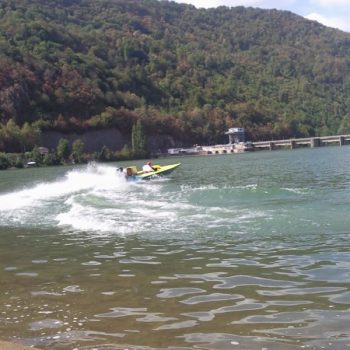
The Zvornik Lake offers many opportunities for water sports. During their stay on the lake, visitors can enjoy kayaking, canoeing, motor and traditional boat rides, speedboat rides, or try water skiing.
The Zvornik area abounds in nature and terrains suitable for hiking, mountain biking, as well as areas interesting for paragliding flights.
The two most attractive mountains for hiking and recreation are Grkinja (746 meters above sea level) and Udrč. Udrč, with its 1,042 meters above sea level, is also the highest peak in the Zvornik area. Although the trails in this area are not fully arranged and marked, hiking is still possible with the help of experts from hiking associations operating in the Zvornik area.
Get to know Zvornik by walking through the city streets, the sports and recreational trail along the Drina River, pass through the paths of legends “Jerina’s Stone Path”, “Jerina’s Path of Passion” and feel the spirit of different times. Do not miss the opportunity to enjoy the magnificent view of the city from the fortress on the hill above Zvornik, capture a unique moment with a photograph, and enjoy a rest and the scent of nature at the Kaplan picnic spot.
The rivers and the lake in the Zvornik area are characterized by an extremely diverse fish stock, where species such as vimba, perch, chub, barbel, catfish, pike, carp, trout, amur, and huchen in the Drinjača part are found. The association, i.e. the fish guard service, takes great care of the preservation of the fish stock, and restocking is carried out every year.
Gastro

When visiting Zvornik, we recommend visiting the Soja family restaurant in the village of Drinjaca.
The Soja Restaurant is characterized by a long tradition, top-quality services, quality food, a large selection of wines, alcoholic and non-alcoholic beverages, an ethno corner, and friendly staff, which make the far-famed Zvornik restaurant “Soja” recognizable. Specialties of traditional local cuisine, prepared with great care and a desire to make you feel the authenticity of dishes that are seemingly simple, but feed the soul, at least as much as they feed the body – starting from homemade kajmak, fritters, and dried meat, through beans, all the way to meat specialties. Veal under the sac with potatoes, grilled dishes, fresh fish and famous cevapi are just some of the dishes you can find on the carefully selected menu.
The Avala Restaurant in the very center of the city also offers a large selection of local traditional dishes of this region with a view of the Drina River and the old bridge, and in the Slavija Restaurant, be sure to order their gourmet breakfast that will give you energy for a full-day tour of Zvornik.
In addition to the suggested restaurants, the city of Zvornik also offers a large selection of local and international dishes in a large number of restaurants, pastry shops and barbecue dishes, and the specialty is certainly Drina fish.
Zvornicko Lake
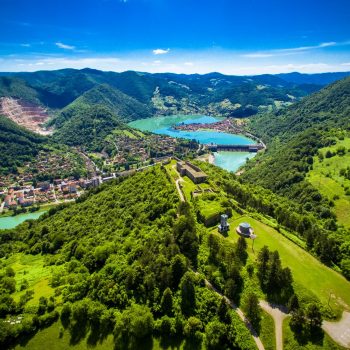
The Zvornicko Lake stretches 25 km upstream from the dam near Zvornik and Mali Zvornik. The lake has ideal conditions for the development of nautical tourism. In the Zvornik Lake’s coast there are small beaches, a large number of weekend houses and several catering facilities, and kayaking, canoeing and folk boats rides with fishing, swimming and resting are just some of the activities that tourists can engage in on this lake. The State Championship in Kayak and Canoe on calm waters is held on the lake. There are also many accommodation and catering facilities on the site itself.
Vitinicki Kiseljak

Vitinicki Kiseljak is a small and hospitable place, only 24 kilometers away from the town of Zvornik. It is characterized by its ecologically preserved environment, while in the central part of the settlement, along the course of the small river Jasenica, nine mineral springs of different quality, capacity, healing properties and taste spring up, unique in many ways in Europe. The waters were discovered at the end of the 18th and the beginning of the 19th century. There are thousands of people who have been using the gratitude of these waters for more than a hundred years, creating their own experience, both in terms of diseases and in the way of treatment, not hiding their very favorable assessment of success. In Kiseljak, there are good hosts, hard-working people with a wide heart, ready to welcome every visitor.
Djurdjev Grad – Zvornik Fortress
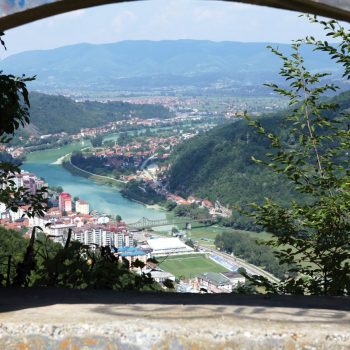
Djurdjev Grad, as one of the most valuable objects of its kind in the country, has been declared a National Monument of Bosnia and Herzegovina. It is assumed that the fortress was built at the end of the 13th or beginning of the 14th century. The city consists of three interconnected parts: Lower (next to the Zvornik-Sarajevo road, with a recognizable city gate), Middle (the oldest part, with the Great Tower 20 meters high in the central part of the fortification) and Upper city (on an elevated hill above Zvornik, at about 400 m above sea level). In the immediate vicinity of the fortress is the Church of St. Petka Trnova, which was built on the model of Njegoš’s chapel from Lovćen. The fortress can be reached by a 1,700-meter-long footpath leading from the city center across the Bair settlement and a 7 km long asphalt road across the Srpska Varoš settlement, which is suitable for motor traffic. A special advantage is that the entire complex of the Upper Town is located on an attractive site that offers a beautiful view of Zvornik, Lake Zvornik and the Drina River (viewpoints), and as mentioned, the Upper Town can be reached by paths that were named after interesting and mystical legends, which further enhances the experience that tourists can have when visiting this site.
Stecci
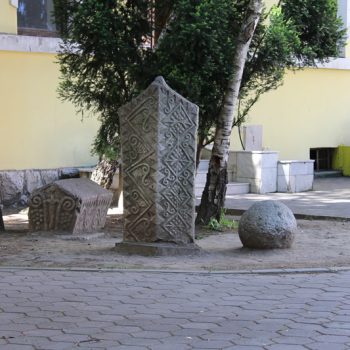
A total of 56 necropolises with about 850 stecci, scattered in different locations throughout the municipality of Zvornik (Kozjak, Skocic, etc.), have been recorded in the area of the municipality of Zvornik. It is of particular value that a special style of decorating stećci originated in the area of the municipality of Zvornik, in the valley of the Hoča River. Namely, this school of carving is characterized by a pillar in the shape of a medieval sword, and the relief is decorated with a vine in the shape of a volute with bunches of grapes.
Medieval Town of Kuslat
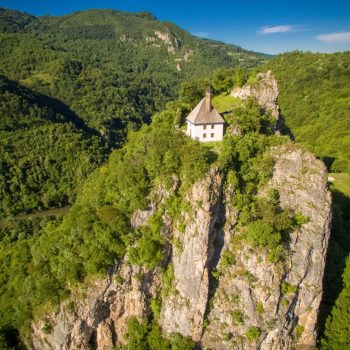
Kuslat is a medieval town that was built in the 13th century. This cultural and historical monument is located at the confluence of the Jadar and Drinjaca rivers, 15 kilometers south of Zvornik, on a perpendicular cliff.
As an important monument of material culture, it testifies to a bygone era in which, with the beauty of its appearance, and the strength and solidity of its ramparts, it symbolized the power and reputation of its masters. The travel writer Evliya Çelebi wrote: “It is a round stone town on the bank of the Jadar River, on a cliff that rises to the sky… A man does not dare to look down into the valley, where the river flows roaring like thunder.” According to his statements, in Kushlat there was a granary, an armory, five cannons, and a commander (dizdar) with a garrison of 28 soldiers. The town had 120 houses with gardens, the road leading to the town is carved into the rock, two steps wide, and has 500 stone steps and a stone fence on both sides. The rock on which the town was built is tilted and pointed like an egg.
Ivo Andric noted: “What kind of Bosnian are you if you don’t know about Kuslat. It is on that part of the old road that leads from Zvornik towards central Bosnia, and it is also known for the fact that the first mosque in Bosnia was built there.” The town was abandoned shortly before 1833.


